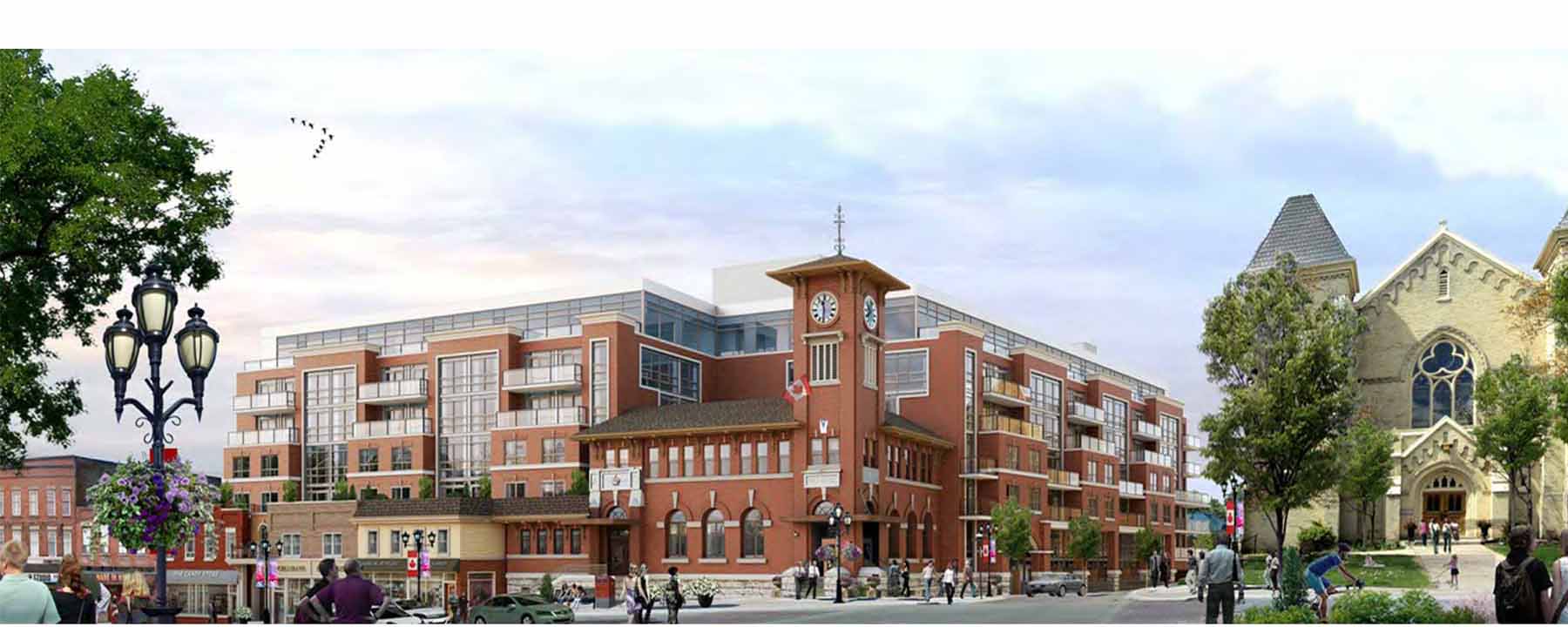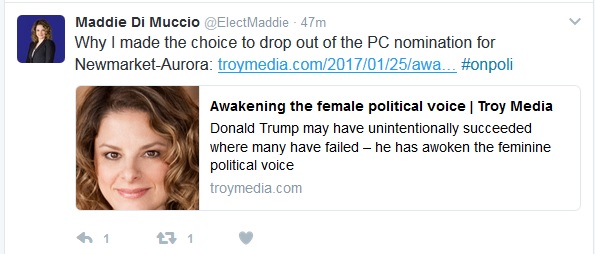- Details
- Written by Gordon Prentice
Clock Tower developer, Bob Forrest, has told the OMB he wants his appeal heard "at the first available opportunity".
He says his latest appeal and the earlier one - which claimed his completed application had been lodged with the Town before the Heritage By-law had been enacted in 2013 - should be rolled up together and heard at the same time. 
Forrest's lawyer, Ira Kagan - who represented Marianneneville Developments at the Glenway OMB Hearing - complains Town staff have been dragging their feet, taking years to deal with the application.
Whoa! Not quite so fast.
This is a good example of Kagan's trademark bluster and swagger.
Forrest knew Town staff had significant reservations about aspects of his proposed development. As Forrest sought to accommodate these concerns, his project morphed over the years from nine storeys to six and finally settled on seven.
He thought he would bide his time, tweak the project as necessary and, eventually, with a few endorsements from important people, he would get his approval.
It didn't work out that way.
Staff concluded Forrest's final seven storey version could not be supported and brought forward their amended proposal. Both Forrest's proposal and the staff's recommended variation were rejected by councillors on 5 December 2016.
"Good planning" Are you serious?
There is nothing in Ira Kagan's letter that comes as a surprise.
Even his contention that the proposed seven storey apartment block in the heart of the town's Heritage Conservation District represents
"good heritage planning"
didn't make me laugh as it might once have done.
These words are standard planning speak. A template to be used as and when the occasion demands.
This email address is being protected from spambots. You need JavaScript enabled to view it.
Updates will follow as more information becomes available.
You can read the appeal letter here. Scroll to the bottom of the page and open.
- Details
- Written by Gordon Prentice
The fragile and tortured Maddie Di Muccio has withdrawn from the race to become the Progressive Conservative Party candidate for Newmarket-Aurora in the forthcoming Provincial election. 
In this curious article published today she infers she is the victim (there's that word again) of sexism in the PCs with a Committee of Party grandees asking her all sorts of inappropriate questions such as how she could possibly combine being an MPP with motherhood.
Of course, these kinds of questions are totally off-the-wall and smack of ancient prejudices. So why didn't she face the old grey-beards down?
I think her outrage is a tad contrived. There are lots of able and personable women who have succeeded in politics. But Di Muccio's problem is her poisonous personality which repels people even in her own Party. She says terrible unsisterly things about other women. The evidence is everywhere.
She says she had the support of the Party leader, Patrick Brown, who, when told of all these shenanigans, advised her to stick with it. But she didn't. She quit.
But why? If she had recruited zillions of new supporters her path to the nomination surely would have been clear.
Not smooth necessarily. But clear.
But no. She threw in the towel and lost the chance of gaining an important platform to promote and promulgate her views - zany though they are.
I honestly don't know if I am surprised by what has just happened.
Probably not.
I'd like to think I saw it coming.
This email address is being protected from spambots. You need JavaScript enabled to view it.
- Details
- Written by Gordon Prentice
Aspiring Provincial Parliamentary candidate for the Newmarket-Aurora Progressive Conservatives, Maddie Di Muccio, today deleted tweets claiming I am a paedophile.
Di Muccio liked tweets from the troll, TruckMafk TMTM. He has also removed a lengthy series of tweets alleging my paedophilia.
Derek HighwayMonitor, who, like Di Muccio, re-tweeted baseless allegations of paedophilia has also deep-cleansed his Twitter account.
I am still waiting to hear from Patrick Brown MPP, the Leader of the Progressive Conservative Party of Ontario, and from Derek Murray, the President of the Newmarket-Aurora PC Riding Association.
Yesterday I asked them to take whatever steps they considered appropriate to get Di Muccio to remove the Tweets. I also asked them to secure an apology from Di Muccio. In my letters to Mr Brown and Mr Murray I included screen shots of Di Muccio's smears.
Although the offending tweets and re-tweets have now been taken down - and I am grateful - the issue is not completely resolved until I get an apology from Di Muccio.
I shall post updates.
This email address is being protected from spambots. You need JavaScript enabled to view it.
- Details
- Written by Gordon Prentice
Five days ago Maddie Di Muccio told her twitter audience she liked tweets linking me to paedophilia.
And Di Muccio's tweets are still up there in cyberspace, available to a global audience.
I have therefore written today to the Leader of the PC Party of Ontario, Patrick Brown, and to the President of the Newmarket-Aurora PC Riding Association, Derek Murray, asking them to take whatever steps they consider appropriate to ensure that Di Muccio:
- deletes her Tweets liking those from the troll TruckMafk claiming I am a paedophile
- expresses regret to Patrick Brown and Derek Murray for her actions which promoted the belief that I am a paedophile and apologise in writing to me.
In the absence of any expression of regret or an apology, I have urged Mr Brown and Mr Murray to advise Di Muccio to take her concerns about my alleged paedophilia to the police together with the facts she is relying on to support such an assertion.
Di Muccio is currently seeking the nomination to become the Progressive Conservative candidate for Newmarket-Aurora in the Provincial election in 2018.
I shall post updates in due course.
This email address is being protected from spambots. You need JavaScript enabled to view it.
- Details
- Written by Gordon Prentice
PC wannabe MPP Maddie Di Muccio "likes" tweets that claim I am a paedophile.
Twitter tells us
'Likes are represented by a small heart. They are commonly used to show appreciation for a Tweet.'
Not long after I posted my piece on Maddie Di Muccio and her unsuccessful bid to extract $25,000 from Canada Post, the dark, fetid, unsavoury underbelly of the internet began to stir.
TruckMafk TMTM @TruckMafd sets the hare running yesterday with this tweet:
@gordon_prentice Is that pedophilia charge against you cleared up yet or is that trial still on?

then this one
@gordon_prentice is it true that you're currently in court defending #Pedophilia charges?
followed by
@gordon_prentice can u address the rumours of #Pedophilia charges against u? Are u innocent? Did you ever mollest #children?

followed by
@gordon_prentice on these alleged #Pedophilia allegations, do u got any comments? If true, is there anything u'd say 2 their families?
followed by
@gordon_prentice r the rumours true that the judge may throw out your case of u raping a kid? R u still advised 2 stay away from schools?
followed by
in reply to Johnny D
TruckMafk TMTM @ TruckMafk
@horsesandbeer I also hear rumours of this sick man's pedophilia. Keep yr kids away from @Gordon_Prentice until these rumours are addressed!
Engaging with trolls
Instead of ignoring this tripe, Di Muccio chooses to engage with this troll - more than once. Her appreciation of tweets alleging paedophilia by me plumbs new depths, even for her.
And to be clear, M'Lud, I do not have a criminal record either here in Canada or in the UK. Furthermore, I have never been charged with any crime nor have I ever been investigated by the police in connection with any crime whatsoever, anywhere, in any jurisdiction. I am, M'Lud, a model citizen. 
For her part, Di Muccio has chosen to engage on social media with someone who posts baseless allegations of paedophilia and who makes crude sexist and pejorative comments about people.
If the Newmarket-Aurora Riding Association abandons all sense of decency and selects Di Muccio as their candidate in the Provincial Election in 2018 they will be telling the rest of us a great deal about the standards they have set themselves.
Fake news
They will be saying it is OK to coarsen and debase political discourse locally and it is OK to promote "fake news".
The leaflet on the right was circulated by Canada Post on behalf of its client, the newspaper Snap'd, in the run up to the October 2014 Newmarket municipal election which saw Di Muccio losing her Ward 6 seat to Kelly Broome. We do not yet know who was responsible for the text.
But we do know Maddie Di Muccio believes it contains
"vile and disgusting smears".
As it happens, Matilde Barbara Di Muccio will be returning to the Newmarket Small Claims Court on Friday 10 February 2017. This time, she is seeking $5,000 in damages from Regional Councillor John Taylor who is accused of causing her
"reputational damage".
In the extensive list of things she claims Taylor has allegedly done to her I see the words
"injurious falsehoods"
I am left wondering if the promotion of unfounded allegations of paedophilia by Di Muccio against me counts as an injurious falsehood?
If it doesn't, M'Lud, then perhaps it should.
This email address is being protected from spambots. You need JavaScript enabled to view it.
Page 183 of 286